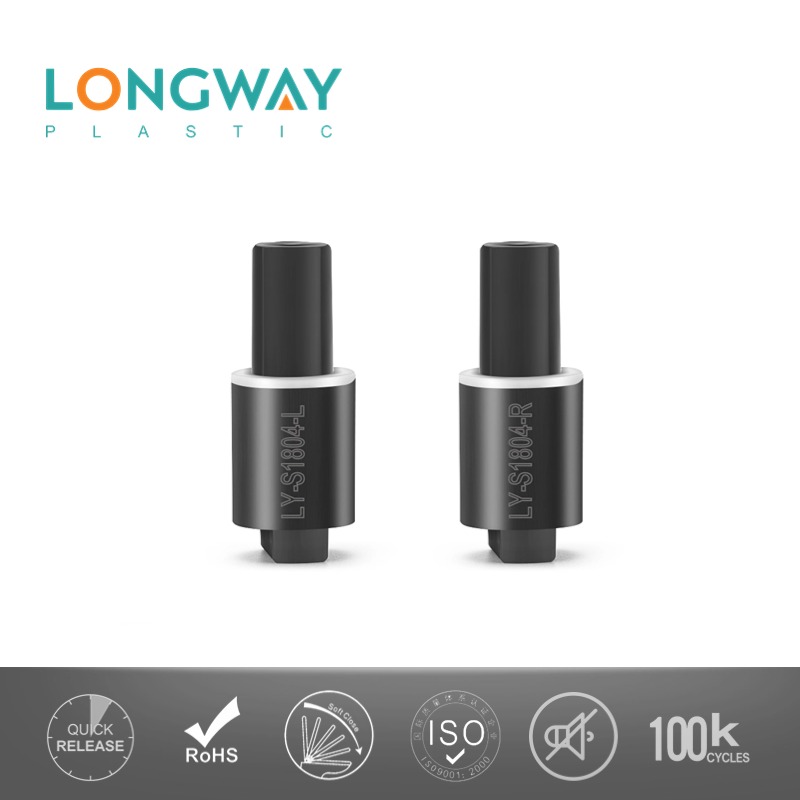ONE-STOP SOLUTION FOR YOUR SOFT CLOSE PROJECTIONS
00

01




Introduction: Imagine a scenario where you gently close a toilet lid and it glides down smoothly, providing a quiet and controlled closing experience. This satisfying slow-down effect is made possible by a crucial component known as a soft close rotary damper. In this article, we will explore the intricacies of soft close rotary dampers and delve into the influence of damper quality on the slow-down effect of toilet seats. 1. Understanding Soft Close Rotary Dampers: 1.1 Definition and Purpose: Soft close rotary dampers are mechanical devices designed to control and regulate the speed and force of motion in moving parts. Specifically, they are integral in dampening the closing action of toilet lids, ensuring a gentle and noiseless descent. 1.2 How Soft Close Rotary Dampers Work: To grasp the inner workings of soft close rotary dampers, picture a small but highly efficient mechanism embedded within the hinge or closing mechanism of a toilet lid. When the lid is released, the damper uses hydraulic or pneumatic resistance to decelerate the closing motion, resulting in a controlled, slow-down effect. 1.3 Benefits of Using Soft Close Rotary Dampers in Toilet Lid Closures: The integration of soft close rotary dampers in toilet seats offers a range of advantages beyond mere noise reduction. Let's explore some key benefits: Prevents Slamming: By controlling the lid's descent, soft close rotary dampers eliminate the unpleasant noise caused by slamming toilet lids, making them ideal for households or public spaces seeking a peaceful environment. Safety: Soft close rotary dampers drastically minimize the risk of finger injuries or accidental lid damage, especially in households with children or elderly individuals. Extended Lifespan: The controlled, gentle closing action reduces wear and tear on the toilet lid and its hinges, resulting in improved longevity and durability. Enhanced Aesthetics: Soft close rotary dampers contribute to a sleek and sophisticated bathroom experience, eliminating the need for loud slamming or jarring noises. 2. The Importance of Damper Quality 2.1 Exploring the Role of Damper Quality in the Slow-Down Effect When it comes to toilet seats, the slow-down effect refers to the smooth and controlled descent of the lid. Damper quality plays a crucial role in achieving this effect. High-quality dampers ensure a gentle closing motion, preventing any sudden movements or noise. 2.2 Factors Influencing Damper Quality Several factors influence the quality of a damper. One crucial aspect is the design and construction of the damper itself. Factors such as materials used, precision engineering, and build durability all contribute to the overall quality. Additionally, elements like damping force and speed adjustability are significant considerations. 2.3 Impact of Different Damper Qualities on the Overall Performance The quality of a damper directly affects its performance in toilet seats. Low-quality dampers may result in abrupt lid movements, defeating the purpose of the slow-down effect. On the other hand, high-quality dampers provide a smooth and controlled closure, enhancing user experience and reducing wear and tear on the toilet lid hinges. 3. Analyzing the Slow-Down Effect 3.1 Exploring the Concept of the Slow-Down Effect: To truly appreciate the significance of damper quality, we must first understand the slow-down effect. When you gently nudge a soft close toilet lid, it gracefully glides down, with controlled speed and quietness. This slow and controlled closing mechanism not only prevents accidents or damaged lids but also adds a touch of elegance to your bathroom experience. 3.2 The Impact of Damper Quality on Speed and Smoothness: Now, let's dig deeper into how damper quality influences the speed and smoothness of the slow-down effect. High-quality soft close rotary dampers are designed with precision engineering, ensuring optimal resistance and motion control. These dampers contain specialized hydraulic fluids and adjustable valves, which regulate the lid's movement, providing a consistent and controlled deceleration. In contrast, lower-quality dampers may lack the necessary engineering finesse, resulting in uneven or jerky lid closures. 3.3 Real-Life Examples and Comparisons: To illustrate the stark differences between various damper qualities, let's consider two scenarios: a toilet equipped with a premium soft close rotary damper and another with a subpar damper. In the first scenario, as you gently release the lid, the damper engages, slowing down the lid's descent smoothly and silently. Conversely, the second scenario with a lower-quality damper leads to a less controlled and noisier closing experience. 4. Choosing the Right Damper for Toilet Lid Closures 4.1 Factors to Consider when Selecting a Damper for Toilet Lid Closures: When it comes to choosing the perfect damper for your toilet lid, there are several essential factors to consider. The right damper should not only provide a smooth closing experience but also meet your specific requirements. Factors such as size, durability, and compatibility with your toilet hinge system should be taken into account. 4.2 Evaluating Damper Quality and Performance Indicators: To ensure a satisfactory slow-down effect and a prolonged lifespan of your dampers, evaluating the quality and performance indicators is crucial. As you make your selection, consider factors such as the material used, manufacturing standards, and brand reputation. Additionally, look for dampers that undergo rigorous testing to guarantee smooth and consistent performance. 4.3 Expert Tips for Choosing the Best Damper for Specific Needs and Preferences: Choosing the best damper can be overwhelming, given the multitude of options available. To simplify the process, here are some expert tips to help you make an informed decision: 4.3.1 Assess your specific needs: Determine your priorities and expectations from a damper. Are you looking for noise reduction, high durability, or precise slow-down speed? Understanding your needs will narrow down your options. 4.3.2 Research reputable brands and manufacturers: Look for well-established brands known for producing high-quality dampers. Read customer reviews and seek recommendations to gauge their reputation and performance. 4.3.3 Seek expert advice: Consider consulting professionals in the field who can provide valuable insights and recommendations based on their experience. They can guide you towards the most suitable damper for your toilet lid closure system. 4.3.4 Test and compare dampers: If possible, try out different dampers to assess their performance firsthand. Compare factors like slow-down speed, noise level, and overall smoothness of operation to determine which damper meets your requirements. 5. Maintenance and Longevity of Damper Systems 5.1 Tips for ensuring proper maintenance of soft close rotary dampers: Soft close rotary dampers, while durable, require regular maintenance to perform optimally. Here are some valuable tips to keep in mind. 5.1.1 Lubrication: Regularly apply silicone-based lubricant to the hinges and moving parts of the dampers to reduce friction and ensure smooth operation. 5.1.2 Cleaning: Clean the dampers using a soft, damp cloth to remove any dust, debris, or residue that may hinder their performance. 5.1.3 Tightening: Periodically check and tighten any loose screws or connections to maintain stability and prevent premature wear. 5.2 Common issues and troubleshooting methods: Even with proper maintenance, occasional issues may still arise. Here are some common problems associated with soft close rotary dampers and tips for troubleshooting them. 5.2.1 Slow or uneven closing: If the lid closes too slowly or unevenly, check for any obstructions or debris in the damper mechanism and clean it thoroughly. Additionally, ensure that the hinges and mounting points are properly aligned. 5.2.2 Noisy operation:
Taizhou Longway Molding Technology Ltd has participated in bathroom exhibitions around the world. Since 2013,Taizhou Longway Molding Technology Ltd provides precision quality innovative solutions to our customers,including rotary dampers,metal hinges,our dampers can meet NF standard,they have been engineered and tested to provide smooth consistent torque,what help to make your products safer,more fluid and silent. Since 2018,we started the design and development of plastic injection moldings,especially toilet seat & damper moldings,we have advanced processing equipments and experienced R&D team.The strict control of each process is focused to ensure the excellent qulity of the mold. --------------------------------------------------------------------------------- Contact: Miss Julia Phone/WhatsApp/WeChat: +86 18861098872 Email: xiaofeng@jslongway.com Taizhou Longway Molding Technology Ltd No. 9, Renmin East Road, Industrial Concentration Zone, Chenbao Town, Xinghua City, Jiangsu Province Homepage: https://www.longwaydamper.com/ Linkedin: https://www.linkedin.com/in/fangfang-zhu-3497511b8/ ---------------------------------------------------------------------------------
View More
Taizhou Longway Molding Technology Ltd is a damper factory with strict production and testing processes. Our Main Products: ■Toilet Seat Soft Close Rotary Damper ・16~23mm Series ・Torque 0.5-4Nm ■Toilet Seat Quick Release Hinge ・One Button Hinge ・Two Buttons Hinge ・MDF Hinge ■Toilet Seat Fixing Set ・Top Fix ・Bottom Fix ■Toilet Seat Metal Parts ■Toilet Lid Mould --------------------------------------------------------------------------------- Contact: Miss Julia Phone/WhatsApp/WeChat: +86 18861098872 Email: xiaofeng@jslongway.com Taizhou Longway Molding Technology Ltd No. 9, Renmin East Road, Industrial Concentration Zone, Chenbao Town, Xinghua City, Jiangsu Province Homepage: https://www.longwaydamper.com/ Linkedin: https://www.linkedin.com/in/fangfang-zhu-3497511b8/ ---------------------------------------------------------------------------------
View More
A big thank you to everyone who stopped by our booth. It was an honor being part of this journey and fantastic week with all our valued customers. Looking forward for the next one! ---- Miss Julia Taizhou Longway Molding Technology Ltd Industrial Concentration Zone, Chenbao Town, Xinghua City, Taizhou City, Jiangsu Province, China +86 18861098872 (Mobile Phone/WhatsApp/WeChat) xiaofeng@jslongway.com https://www.linkedin.com/in/fangfang-zhu-3497511b8/ ----
View More
Address: No. 9, Renmin East Road, Industrial Concentration Zone, Chenbao Town, Xinghua City, Jiangsu Province
Copyright 2023 © Taizhou Longway Molding Technology Ltd All Rights Reserved. Sitemap | Blog | Xml | Privacy Policy  Network Supported
Network Supported